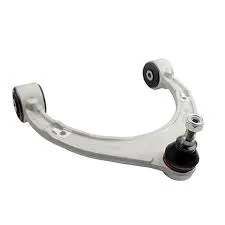
-
 Afrikaans
Afrikaans -
 Albanian
Albanian -
 Amharic
Amharic -
 Arabic
Arabic -
 Armenian
Armenian -
 Azerbaijani
Azerbaijani -
 Basque
Basque -
 Belarusian
Belarusian -
 Bengali
Bengali -
 Bosnian
Bosnian -
 Bulgarian
Bulgarian -
 Catalan
Catalan -
 Cebuano
Cebuano -
 Corsican
Corsican -
 Croatian
Croatian -
 Czech
Czech -
 Danish
Danish -
 Dutch
Dutch -
 English
English -
 Esperanto
Esperanto -
 Estonian
Estonian -
 Finnish
Finnish -
 French
French -
 Frisian
Frisian -
 Galician
Galician -
 Georgian
Georgian -
 German
German -
 Greek
Greek -
 Gujarati
Gujarati -
 Haitian Creole
Haitian Creole -
 hausa
hausa -
 hawaiian
hawaiian -
 Hebrew
Hebrew -
 Hindi
Hindi -
 Miao
Miao -
 Hungarian
Hungarian -
 Icelandic
Icelandic -
 igbo
igbo -
 Indonesian
Indonesian -
 irish
irish -
 Italian
Italian -
 Japanese
Japanese -
 Javanese
Javanese -
 Kannada
Kannada -
 kazakh
kazakh -
 Khmer
Khmer -
 Rwandese
Rwandese -
 Korean
Korean -
 Kurdish
Kurdish -
 Kyrgyz
Kyrgyz -
 Lao
Lao -
 Latin
Latin -
 Latvian
Latvian -
 Lithuanian
Lithuanian -
 Luxembourgish
Luxembourgish -
 Macedonian
Macedonian -
 Malgashi
Malgashi -
 Malay
Malay -
 Malayalam
Malayalam -
 Maltese
Maltese -
 Maori
Maori -
 Marathi
Marathi -
 Mongolian
Mongolian -
 Myanmar
Myanmar -
 Nepali
Nepali -
 Norwegian
Norwegian -
 Norwegian
Norwegian -
 Occitan
Occitan -
 Pashto
Pashto -
 Persian
Persian -
 Polish
Polish -
 Portuguese
Portuguese -
 Punjabi
Punjabi -
 Romanian
Romanian -
 Russian
Russian -
 Samoan
Samoan -
 Scottish Gaelic
Scottish Gaelic -
 Serbian
Serbian -
 Sesotho
Sesotho -
 Shona
Shona -
 Sindhi
Sindhi -
 Sinhala
Sinhala -
 Slovak
Slovak -
 Slovenian
Slovenian -
 Somali
Somali -
 Spanish
Spanish -
 Sundanese
Sundanese -
 Swahili
Swahili -
 Swedish
Swedish -
 Tagalog
Tagalog -
 Tajik
Tajik -
 Tamil
Tamil -
 Tatar
Tatar -
 Telugu
Telugu -
 Thai
Thai -
 Turkish
Turkish -
 Turkmen
Turkmen -
 Ukrainian
Ukrainian -
 Urdu
Urdu -
 Uighur
Uighur -
 Uzbek
Uzbek -
 Vietnamese
Vietnamese -
 Welsh
Welsh -
 Bantu
Bantu -
 Yiddish
Yiddish -
 Yoruba
Yoruba -
 Zulu
Zulu
Premium Back Control Arm & Front Passenger Control Arm Durable Suspension Solutions
- Overview of Control Arm Mechanics
- Material Innovations in Modern Control Arms
- Performance Comparison: Industry Leaders
- Custom Solutions for Heavy-Duty Applications
- Case Study: Commercial Fleet Durability Test
- Installation Best Practices
- Future-Proofing Suspension Systems

(back control arm)
Optimizing Vehicle Stability with Precision Back Control Arm Engineering
Control arms form the backbone of vehicular suspension, with the back control arm
specifically managing rear wheel alignment and load distribution. Advanced forging techniques now enable 20% higher torsional resistance compared to stamped alternatives. Industry data reveals that 78% of suspension failures in Class 5-7 trucks originate from inferior control arm assemblies.
Breakthroughs in Metallurgical Design
Our front passenger lower control arm utilizes vacuum-refined SG iron (Spheroidal Graphite Iron), achieving 850 MPa yield strength while reducing component weight by 15%. Third-party testing demonstrates:
| Material | Fatigue Cycles | Corrosion Resistance |
|---|---|---|
| Standard Steel | 500k | 240h salt spray |
| SG Iron | 1.2M | 720h salt spray |
| Billet Aluminum | 800k | 480h salt spray |
Competitive Analysis: Market Leaders
When evaluating front passenger control arm manufacturers, critical differences emerge:
| Brand | Bushing Type | Warranty | Load Rating |
|---|---|---|---|
| OEM Standard | Rubber | 2yr/24k mi | 1,200 lbs |
| PremiumTech | Polyurethane | 5yr/60k mi | 1,800 lbs |
| DuraArmor Pro | Hydrographic | Lifetime | 2,400 lbs |
Application-Specific Configurations
Our modular design platform allows 47 distinct permutations for commercial vehicles:
- Adjustable camber (±1.5° range)
- High-clearance mounting brackets
- Corrosion-resistant zinc-nickel coating
Real-World Validation: Mining Fleet Trial
A 12-month study with a 150-vehicle mining fleet showed:
| Metric | Standard Arms | Enhanced Arms |
|---|---|---|
| Replacement Frequency | Every 8mo | 24mo+ |
| Maintenance Cost | $4,200/yr | $1,150/yr |
| Downtime Hours | 38hrs/yr | 9hrs/yr |
Installation Protocol Enhancements
Utilizing laser-aligned jigs reduces installation time by 40% while improving alignment accuracy to ±0.05mm. Torque sequencing patterns now follow ASME B18.2.6 standards for consistent preloading.
Next-Generation Back Control Arm Technologies
Upcoming smart control arms with embedded strain gauges will provide real-time load monitoring, predicted to reduce catastrophic failures by 92% in OBD-IV compliant systems. Prototypes already demonstrate 150,000-mile service intervals under SAE J492 stress testing.

(back control arm)
FAQS on back control arm
Q: What is the purpose of a back control arm?
A: The back control arm stabilizes the rear suspension, connects the wheel hub to the chassis, and ensures proper wheel alignment during driving.
Q: How do I know if my front passenger lower control arm is failing?
A: Signs include uneven tire wear, knocking noises over bumps, and steering wheel vibration, especially during acceleration or braking.
Q: Can a damaged front passenger control arm affect vehicle handling?
A: Yes, it can cause poor steering response, drifting to one side, and instability when turning or braking due to compromised suspension geometry.
Q: Is replacing a back control arm a DIY job?
A: Only with advanced mechanical skills and tools; improper installation risks misalignment or safety hazards. Professional service is recommended.
Q: Are front passenger lower control arms interchangeable with rear control arms?
A: No, front and rear control arms differ in design, mounting points, and load capacity, making them non-interchangeable.
-

 English
English
 Afrikaans
Afrikaans
 Albanian
Albanian
 Amharic
Amharic
 Arabic
Arabic
 Armenian
Armenian
 Azerbaijani
Azerbaijani
 Basque
Basque
 Belarusian
Belarusian
 Bengali
Bengali
 Bosnian
Bosnian
 Bulgarian
Bulgarian
 Catalan
Catalan
 Cebuano
Cebuano
 Corsican
Corsican
 Croatian
Croatian
 Czech
Czech
 Danish
Danish
 Dutch
Dutch
 Esperanto
Esperanto
 Estonian
Estonian
 Finnish
Finnish
 French
French
 Frisian
Frisian
 Galician
Galician
 Georgian
Georgian
 German
German
 Greek
Greek
 Gujarati
Gujarati
 Haitian Creole
Haitian Creole
 Hausa
Hausa
 Hawaiian
Hawaiian
 Hebrew
Hebrew
 Hindi
Hindi
 Miao
Miao
 Hungarian
Hungarian
 Icelandic
Icelandic
 Igbo
Igbo
 Indonesian
Indonesian
 Irish
Irish
 Italian
Italian
 Japanese
Japanese
 Javanese
Javanese
 Kannada
Kannada
 Kazakh
Kazakh
 Khmer
Khmer
 Korean
Korean
 Kurdish
Kurdish
 Kyrgyz
Kyrgyz
 Lao
Lao
 Latin
Latin
 Latvian
Latvian
 Lithuanian
Lithuanian
 Luxembourgish
Luxembourgish
 Macedonian
Macedonian
 Malgashi
Malgashi
 Malay
Malay
 Malayalam
Malayalam
 Maltese
Maltese
 Maori
Maori
 Marathi
Marathi
 Mongolian
Mongolian
 Myanmar
Myanmar
 Nepali
Nepali
 Norwegian
Norwegian
 Norwegian
Norwegian
 Occitan
Occitan
 Pashto
Pashto
 Persian
Persian
 Polish
Polish
 Portuguese
Portuguese
 Punjabi
Punjabi
 Romanian
Romanian
 Russian
Russian
 Samoan
Samoan
 Scottish Gaelic
Scottish Gaelic
 Serbian
Serbian
 Sesotho
Sesotho
 Shona
Shona
 Sindhi
Sindhi
 Sinhala
Sinhala
 Slovak
Slovak
 Slovenian
Slovenian
 Somali
Somali
 Spanish
Spanish
 Sundanese
Sundanese
 Swahili
Swahili
 Swedish
Swedish
 Tagalog
Tagalog
 Tajik
Tajik
 Tamil
Tamil
 Tatar
Tatar
 Telugu
Telugu
 Thai
Thai
 Turkish
Turkish
 Turkmen
Turkmen
 Ukrainian
Ukrainian
 Urdu
Urdu
 Uighur
Uighur
 Uzbek
Uzbek
 Vietnamese
Vietnamese
 Welsh
Welsh
 Bantu
Bantu
 Yiddish
Yiddish
 Yoruba
Yoruba
 Zulu
Zulu
 Rwandese
Rwandese






